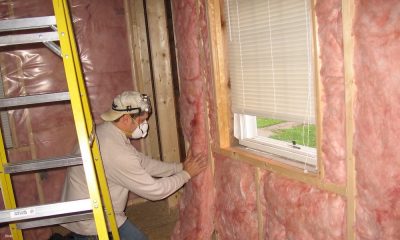Articles
Sales are up and rates are down!
A lot has happened in the last couple of months both from the business perspective and lending in New Zealand. Property sales are on the up, rates still way down and new lenders have come to the market. iLender started out as The Mortgage Lender and I rebranded it to iLender to more reflect what we do.

It’s been a while since my last blog and my excuse is I’ve never been busier.
A lot has happened in the last couple of months both from the business perspective and lending in New Zealand. Property sales are on the up, rates still way down and new lenders have come to the market.
iLender started out as The Mortgage Lender and I rebranded it to iLender to more reflect what we do. Mortgages, Home Loans, Construction Loans, Bridging Finance, Bespoke Mortgages and Second Mortgages.
The website www.ilender.co.nz has been revamped and the most exciting development is a network of Registered Financial Advisers up and down the Country with more coming on board in the coming months. So for people who need a personal visit as opposed to simply dealing on-line can now have what they want. (I don’t take it personally, honest!)
TradeMe is an important part of our business with nearly 20% of our enquiries coming from the site. We have over 50 customer reviews means new customers can read actual reviews from existing customers so they know what to expect. Expert advice, speedy service dedicated to them, not the Banks.
Property sales are nearly at 2007 levels in many areas with prices on the up. The doomsayers have been proved wrong as quite simply people need to have somewhere to live, either own or rent, and each property has to have an owner. Demand for investment property is really strong as rents have increased in the main centres. Development has restarted with new sub-divisions and many properties sold and with tenants lined up before the property is even finished.
New lending has come to New Zealand in the form of an Australian Lender called Resimac. Huge in Australia, they bought NZF Homeloans earlier this year and now offer a range of products via Brokers only, specialising in Lo Doc home loans for the Self Employed. They also offer Bank matching rates for employed but I can’t help but think that most people would rather deal with a Bank.
We also have a new genuine Kiwi owned Bank, not Kiwibank! This locally owned Bank has great service and offers a product, unique amongst Banks, for those who have had a glitch on the credit file. They play fair too, loading the interest rate by 2% for only 12 months and then reducing it to Bank rates as long as the mortgage has been paid on time.
Credit referencing has also changed. Be careful about applying for too much credit and not taking it up. Too many enquires on your file can mean a Bank declines a Home Loan application because they see enquires as an unhealthy appetite for credit.
Rates. These are still being hotly contested in the marketplace with Banks competing for quality business by offering discounted rates and ‘incentives’. We have great relationship with all of the major players and often get better deals for customers then the customer can by going direct. One customer recently was declined by his own Bank so came to me. I not only got a deal with his own Bank but a discounted rate and $1000 cash back too. His review on TradeMe says it all.
Future rates. I watch these very carefully and agree with the leading economists of most Banks. Nothing is going to change in the next 12 months. So my advice is, if you can, float part of your mortgage and over pay as much as possible to reduce the debt quickly. Be aware though that if your mortgage is with ANZ or National you need to make sure they don’t treat your overpayment as an agreement to always overpay.
Criteria. All Banks have loosened up, with ASB probably the most aggressive in terms of low Lenders Mortgage Insurance for 85%+ loans (Kiwibank are the most expensive!) and now Apartments and Lifestyle blocks are treated the same as standalone houses.
Lo Doc mortgages (no true proof of income) hit the headlines in The Herald recently and I was quoted in the article too. These are only available to Self Employed people and we are seeing a rise in enquiries, minimum trading 12 months and maximum 75% lending means both Bank and customer are safe.
The next 12 months. We see continued growth in sales and a rise in prices. Continued low rates help a lot but a word of caution is it won’t last forever so making sure the mortgage can be paid in the event of loss of income or rise in rate is important.
Coastguard. I am an active member of Coastguard and as spring approaches ask that when going on the water please check the boat and equipment, wear a life jacket and call in a trip report to Coastguard. Annual membership is under $100 and gives free callouts. Non members (Coastguard is a Charity) and at $280 an hour, can be costly. I’ve towed many a boat simply because of lack or fuel or single battery drained by too many toys At $280 an hour it’s an expensive error!
For any Mortgage or Finance needs just let us know what you want and we’ll do everything we can to make it happen. 0508 453633 is the number you need.
Thank you for reading this, pass it on to mates if you think they might benefit too.
Articles
The 2016 New Zealand Architecture Awards announced
The 2016 New Zealand Architecture Awards were announced at an event in Wellington on Friday 11 November.
Twenty-eight buildings and structures have won honours in the leading architectural awards programme, which recognises the best work across all the types of projects designed by New Zealand’s architects.

The 2016 New Zealand Architecture Awards were announced at an event in Wellington on Friday 11 November.
Twenty-eight buildings and structures have won honours in the leading architectural awards programme, which recognises the best work across all the types of projects designed by New Zealand’s architects.
The awards jury, led by Christchurch architect Jasper van der Lingen and comprising Auckland architects Megan Edwards and Michael O’Sullivan, and Melbourne-based architect Andrew Maynard, visited 50 shortlisted buildings from the Bay of Islands to Central Otago.
Four of the winning projects received special acknowledgement in the form of awards named for outstanding New Zealand architects.
The John Scott Award for Public Architecture has gone to Auckland’s neon-pink LightPath / Canada Street Bridge, designed by Monk MacKenzie together with GHD, Landlab and Novare Design.
“The LightPath and Canada Street Bridge are fun as well as functional,” the jury said. “It’s a surprising and uplifting project that sends a message that Auckland is becoming a people-centred city.”
The Ted McCoy Award for Education was presented to Te Kura Kaupapa Māori o Ngāti Kahungununu o Te Wairoa, a small Māori school in Wairoa, northern Hawkes Bay, designed by RTA Studio.
“This is an exemplary case of architecture helping to make a difference,” the jury said. “The school’s architecture sends a message to its students that their community values them and has high expectations of them.”
The Sir Ian Athfield Award for Housing went to Wellington multi-unit development Zavos Corner, designed by Parsonson Architects.
“Zavos Corner would be a great project at any time, but is especially welcome when the country is in such need of high quality, medium-density rental housing,” the jury said. “The architect and client should be congratulated for fighting so hard to realise this project.”
The Sir Miles Warren Award for Commercial Architecture went to Annandale Farm, a group of holiday houses designed by Patterson Associates for a coastal property on Banks Peninsula.
“A highly accomplished trio of buildings – Olive Grove, Scrubby Bay and Seascape – show how architecture can complement and enhance a setting of great natural beauty,” the jury said.
Jasper van der Lingen said the Architecture Awards jury visited projects ranging from house additions to churches, schools and office buildings. Award-winning buildings included a new bus station, a suburban library and a restored war memorial.
“All of the award-winners are highly impressive projects,” van der Lingen said. “They go above competence to reach excellence. They set the benchmark for architectural achievement in New Zealand.”
The LightPath / Canada Street Bridge received its New Zealand Architecture Award in the Planning and Urban Design category. In this project, the jury said, “a redundant section of motorway has been artfully combined with an elegant new bridge to produce an inspiring piece of urban design with enormous public appeal.” The jury said “the stretch of cycleway and walkway signals, with its pink path and coloured lighting, the profound changes that are beginning to occur in Auckland’s transport planning.”
In the Awards public architecture category two projects were recognised – the Christchurch Bus Interchange–Whakawhitinga Pahi and Te Pātaka Kōrero o Te Hau Kapua–Devonport Library.
The Bus Interchange, designed by Architectus, is the first Christchurch anchor project to be completed and, the jury said, “sets an excellent precedent in its provision of a high quality public facility.”
In Auckland Devonport Library, designed by Athfield Architects, has quickly become a valued community asset. The jury said the library’s “generous and engaging spaces, and its combination of relaxed ambience and busy occupation, lend it an admirable vitality.”
The Awards commercial category features, besides Annandale Farm, a factory in the Waikato and a ‘wellness’ retreat in Otago.
Jasmax’s APL Factory in Hamilton is a spacious, light-filled working environment that is already an architectural landmark. They jury said the factory’s “long roadside elevation is a fine addition to the streetscape and wider urban scene.”
Aro Hā Wellness Retreat is a Glenorchy eco-resort designed by Tennent Brown Architects to be as sustainable as possible in terms of energy use and food production. The jury praised the reference in the buildings’ sculpted forms to the mountainous landscape around Lake Wakitipu.
Another business-oriented project to win a New Zealand Architecture Award, in the hospitality and retail category, was Fortieth & Hurstmere, an arcade of cafés and restaurants in Takapuna on Auckland’s north shore designed by McKinney + Windeatt Architects.
“From nothing, the architect has produced a result that’s quite something” the jury said of a project “that saw an unprepossessing building excavated to yield a lively internal laneway that brings depth and diversity to a shopping centre surrounded by carparking and traffic.”
Besides Te Kura Kaupapa Māori o Ngāti Kahungununu o Te Wairoa there was one other winner in the Awards’ education category – St Cuthbert’s College Centennial Centre for Wellbeing, in Epsom, Auckland, designed by Architectus.
“The Centennial Centre provides St Cuthbert’s with one of the country’s best swimming pools in a venue that encourages both elite performance and enjoyable participation,” the jury said.
The Architecture Awards housing categories included nine winners. Zavos Corner won its New Zealand Architecture Award in the Multi-unit category, as did the Mary Potter Apartments in St Albans, Christchurch, designed by Warren and Mahoney Architects.
“The 12 Mary Potter market-rental units for elderly residents have been integrated into an existing community housing project in a manner, the jury said, “shows deep respect for the social mission of the client and the needs of residents.”
Six new standalone houses received New Zealand Architecture Awards. The most northerly of these houses is the Fold House at Waipiro Bay in the Bay of Islands, designed by Bossley Architects. Nestled into its beautiful maritime site the house is, the jury said, “generous, calm, and superbly detailed, and offers a lovely, relaxed progression of spaces.”
E-Type House, in Grey Lynn, Auckland, was designed by Richard Naish of RTA Studio for his own family. Interconnected communal and private spaces are arranged around two north-facing courtyards in a house that, the jury said, “tips its hat to the neighbourhood’s prevailing villa typology, while allowing for a relaxed progress through a long and narrow site.”
Bramasole is a house on flat farmland at Waimauku, west Auckland, designed by Herbst Architects. “This is a graceful and elegant house,” the jury said. “The detailing is excellent, the entry is intriguing and the whole composition is beguiling. The architects have demonstrated a very high level of proficiency.”
Herbst Architects also won a New Zealand Architecture Award for the K Valley House, sited in countryside near Thames. Recycled materials and fittings have been used extensively in the building. “The commitment to a rural idiom is clearly signalled by the rusted corrugated iron sheets on the exterior,” the jury said. “Inside, it is clear that this is a sophisticated piece of work, as comfortable as a cosy retreat should be, and as confident as an inspiring site demands.
Tom’s House near Queenstown, which was designed by Anna-Marie Chin Architects is, the jury said, “a very clever piece of work that meets the needs and relatively modest budget of the client while challenging the design rules and constraints of an upmarket residential estate.” The form of the house is inspired by the traditional shed, but the jury noted that the architect “has twisted the type with an asymmetrical gable that creates dynamic elevations that relate to the local mountain landscape.”
In the Wanaka House by Lovell and O’Connell Architects “a strong, protective roof is anchored to a wall in a manner reminiscent of the bivouac shelters pitched by the region’s pioneering settlers.” The jury said the house is inventive and contemporary, “but its design and strong, simple material palette acknowledges New Zealand’s 1970s architectural tradition”.
The jury gave one award on the Housing–additions category, to the Belmont Garden Room designed by Mitchell & Stout Architects and Rachel Dodd. This “clever, artful and frugal extension” to a small state house on Auckland’s North Shore has “liberated the house and, presumably, its youngest occupants,” the jury said. “The influences are well-chosen: mid-century New Zealand timber modernism and Japanese design.”
Two projects, both designed by Jasmax, received awards in the Interior category. New Zealand Post House in Wellington, is a “concrete brute of a building that has been revitalised with quirky pods and ‘village green’ kiosks, and an internal street through the ground floor that is a welcome alternative thoroughfare to windblown Waterloo Quay.”
In Christchurch, Jasmax’s 141 Cambridge Terrace–Lane Neave Building is a “light-filled, naturally ventilated and highly legible building in which an elegant material palette complements the building’s exposed structure,” the jury said. “The intended effect, which has been achieved admirably, is an energised, purposeful and healthy workplace.”
Zavos Corner, Parsonson Architects’ Wellington multi-unit development, received an Interior award to go along with its Housing award. “The tenanted apartments are a pleasure to inhabit,” the jury said. “The planning is excellent, modest materials and finishes are imaginatively deployed, and each unit benefits from generous and well-framed views out to the street and into an interior courtyard.”
The restoration of two significant historic sites received acknowledgement in the Heritage category. In Wellington, Studio of Pacific Architecture “showed a deep appreciation of Gummer and Ford’s Carillon and Hall of Memories in the impressive remediation and restoration of these national treasures,” the jury said. “The Carillon has been future-proofed as one of New Zealand’s finest musical instruments, and the Hall of Memories respected as one of country’s most profound contemplative spaces.”
At Manutuke, near Gisborne, “a decade and a half of thorough research, extensive consultation, determined fundraising and careful construction have resulted in the inspiring revitalisation by Architects 44 of one of New Zealand’s most important Māori churches – Toko Toru Tapu Church.” The jury noted the history of Toko Toru Tapu Church dates back to 1839, and the existing building is more than a hundred years old. “This history has been acknowledged and honoured in a restoration project which has rendered the church safe, secure and fit for purpose, while restoring original features and components.”
Three projects received awards in the Small Project category. The jury said Cardrona Hut, near Wanaka, designed by RTA Studio, is “a delightful little building that is both an accomplished exercise in sufficiency and an evocative and immediately appealing piece of domestic architecture.” The jury said the little building “suggests a back country tramping hut, although its detailing and level of design deliver a rather more bespoke architectural experience.”
On Waiheke Island, Number 5, by Architectus, is “a well-considered and sympathetic addition to a site with two existing buildings that also gives definition to a sheltered courtyard.” The jury said the “the language of the addition is simple, the materials robust, and the planning clear.”
The Studio and Garden Room–Peters House in Pakuranga, designed by Lynda Simmons Architect reimagines the traditionally sterile relationship in Auckland suburbia of house, front yard and street. “The dominance of the car and default resort to a banal patch of lawn have given way to an engaging and sophisticated addition designed in concert with a mounded garden,” the jury said.
Two awards were made in the Enduring Architecture category, which acknowledges buildings of at least 25 years of age which continue to perform valuable service.
The late Sir Ian Athfield began designing and building the New Zealand Settlement Company – Awaroa House for his family in 1972. The bach on Tasman Bay “is a place no visitor wants to leave,” the awards jury said. “It is an enchanting and relaxed holiday house, utterly without pretension, and beautifully fit for its sociable purpose. It is a magical place in a wonderful setting.”
St Andrew’s Church (1960) at Le Bon’s Bay, Banks Peninsula, designed by the practice of Hendry and Mitchener, is “a beautiful little church striking in its sufficiency and the rigour of its design.” The jury said the church “has a sophisticated modesty, a quality which speaks not just of a simpler and perhaps more architecturally coherent time, but also of its architect’s principled renunciation of excess and clear focus on design essentials.”
The New Zealand Architecture Awards is a programme operated by the New Zealand Institute of Architects with the support of Resene, which has sponsored the Architecture Awards programme for 25 years.
Contact:
John Walsh, Communications Manager, New Zealand Institute of Architects
[email protected]; 021 276 7447
Michael Barrett, Communications Adviser, New Zealand Institute of Architects
[email protected]; 021 884 458
2016 New Zealand Architecture Awards: list of winners
Named Awards
John Scott Award for Public Architecture
LightPath / Canada Street Bridge, Auckland, by Monk MacKenzie together with GHD, Landlab and Novare Design
Sir Miles Warren Award for Commercial Architecture
Annandale Farm, Banks Peninsula, by Patterson Associates
Ted McCoy Award for Education
Te Kura Kaupapa Māori o Ngāti Kahungununu o Te Wairoa, by RTA Studio
Sir Ian Athfield Award for Housing
Zavos Corner, Wellington, by Parsonson Architects
New Zealand Architecture Awards by category
Commercial Architecture
Annandale Farm, Banks Peninsula by Patterson Associates
Aro Hā Retreat, Glenorchy, by Tennent Brown Architects
The APL Factory – “Lifting the Veil”, Te Rapa, Hamilton, by Jasmax
Education
St Cuthbert’s College Centennial Centre for Wellbeing, Epsom, Auckland, by Architectus and Architecture HDT in association
Te Kura Kaupapa Māori o Ngāti Kahungununu o Te Wairoa, Wairoa, by RTA Studio
Enduring Architecture
New Zealand Settlement Company – Awaroa House, Takaka, by Sir Ian Athfield
St Andrew’s Church (1960), Le Bons Bay, Banks Peninsula, by Hendry and Mitchener
Heritage
National War Memorial Projects [Carillon and Hall of Memories], Wellington, by Studio of Pacific Architecture
Toko Toru Tapu Church, Manutuke, Gisborne, by Architects 44
Hospitality & Retail
Fortieth & Hurstmere, Takapuna, by McKinney + Windeatt Architects
Housing
Bramasole, Waimauku, by Herbst Architects
E-Type House, Grey Lynn, Auckland, by RTA Studio
Fold House, Waipiro Bay, Bay of Islands, by Bossley Architects
K Valley House, Thames, by Herbst Architects
Tom’s House, Queenstown, by Anna-Marie Chin Architects
The Wanaka House, by Lovell and O’Connell Architects
Housing – Alterations and Additions
Belmont Garden Room, by Mitchell & Stout Architects and Rachel Dodd in association
Housing – Multi-unit
Mary Potter Apartments, St Albans, Christchurch by Warren and Mahoney Architects
Zavos Corner, Mt Victoria, Wellington, by Parsonson Architects
Interior Architecture
New Zealand Post House, Waterloo Quay, Wellington, by Jasmax
141 Cambridge Terrace/Lane Neave, Christchurch, by Jasmax
Zavos Corner, Mt Victoria, Wellington, by Parsonson Architects
Planning and Urban Design
LightPathAKL/Canada Street Bridge, Auckland, by Monk Mackenzie with GHD, Novare and LandLAB in association
Public Architecture
Christchurch Bus Interchange/Whakawhitinga Pahi, by Architectus
Te Pātaka Kōrero o Te Hau Kapua – Devonport Library, by Athfield Architects
Small Project Architecture
Cardrona Hut, Wanaka, by RTA Studio
Number 5, Onetangi, Waiheke Island, by Architectus
Studio and Garden Room – Peters House, Pakuranga, Auckland, by Lynda Simmons – Architect
Download hi-res image gallery
Download low-res image gallery
Download PDF of Awards booklet
Download full Awards citations and photography credits
Articles
Conquer Your Clutter at Home
It’s kind of like working out — you’ll be impressed by what a few minutes a few times a week can eventually build up to. Tackling a messy home isn’t easy — but especially when you’re renting or leasing, you never know when some minor emergency will have the landlord handing you a 48-hour entry notice.

It’s kind of like working out — you’ll be impressed by what a few minutes a few times a week can eventually build up to.
Tackling a messy home isn’t easy — but especially when you’re renting or leasing, you never know when some minor emergency will have the landlord handing you a 48-hour entry notice. Believe me, you’d rather clean up over several weeks than try to power through that entire pile in the 48 hours before the landlord knocks.
Sometimes, life gets in the way — a long string of late work nights, a sick relative that needs your care for a week, or an unexpected guest can leave you neglecting the housework for a while.
Suddenly, you look around and realize that your house is way messier than you like it, but the task of setting it straight seems unreasonably large.
The sinking feeling of “Oh, man, I’m gonna be at this for weeks” is one of those moments that can define a person. Are you going to try to power up and plow through the entire thing in a huge burst of awesomeness? Are you going to flounder and give up and get used to the clutter? Or are you going to actually keep working on it for weeks?
Because there’s a simple rule about clutter: if it’s not getting better, it’s getting worse. There’s no such thing as ‘stable clutter’. Fortunately, there’s another simple rule about clutter: as long as you clean up everything you use and one more thing, it’s getting better.
Three Easy Ways to Get Started to Reduce Clutter
- Designate a flat surface as your first ‘clean zone’. Every time you interact with your ‘clean zone’, you absolutely must put everything that ends up in the clean zone away where it belongs. Each day, expand your clean zone by a little bit — one item next to the clean zone gets put away, and that space is added to your clean zone.
- Every day, put away 5 things that aren’t where they belong. Also, put everything you get out back where it belongs when you’re done with it. You’ll be amazed at how quickly 5 things get put away, and even if your house has literally a thousand things out of place, you’ll be done in 200 days. That’s not even four months. For a truly messy house, that’s a godsend.
- Create a ‘toss test’ box. Some people just can’t stand to get rid of stuff, either for sentimental reasons or because you never know when you’re going to need that old-school cherry pitting tool you picked up at that tourist trap in Escanaba. If you’re in that crowd, create a ‘toss test’ box, and put all the crap you’re unsure about in there. Mark the date you filled it, and mark your calendar for six months later. Go back and see if you’ve used any of that stuff in the last six months. If you haven’t, ditch it. (Obviously, weather- and holiday-related items need not apply.)
This article has been contributed by RoyalRoseProperties – and found in a discussion on PropertyTalk.com.
Articles
Planning for the Future – Long Term Maintenance Plan
Most maintenance in NZ is left to the caretaker or facilities manager of a building who may be primarily employed in a ‘handy man’ role. Maintenance is expensive, and in the wrong hands could lead to high cost and very little improvement to a building.

Most maintenance in NZ is left to the caretaker or facilities manager of a building who may be primarily employed in a ‘handy man’ role. Maintenance is expensive, and in the wrong hands could lead to high cost and very little improvement to a building. Maintenance should be planned, and a budget established and laid out, to ensure the costs are known, programmed and executed in a cost effective manner.
Planning maintenance through regular inspection of buildings is nothing new. Good maintenance is about good planning and adopting an integral approach, which is integrated with the function of the building, so that agreed goals can be achieved through the implementation of planned maintenance programme.
To prepare a planned maintenance programme requires a Condition Survey which is, a collection of data about the condition of a building, part of a building, estate or portfolio, assessing how that condition compares to a predetermined standard, to identify any actions necessary to achieve that standard now, and maintain it there over a specified period of time, the purpose being to support management decisions making.
A Registered Building Surveyor is the most appropriate professional to carry out a condition survey and to prepare a planned maintenance Programme, as they have extensive knowledge of material failure, weathertightness, life cycle costing and can design and manage the most effective repair methods.
All materials have a limited life span and when that life span is exceeded the material is unlikely to perform. In buildings, this is likely to allow water entry into the framing space and result in raised moist content levels of structural materials, corrosion of metals, timber decay or concrete spalling.
Water leaks in building in NZ has become a multi million-dollar problem, and regular inspection of materials, cladding systems etc is a requirement of every building to enable identification of these problems before they become an issue. Planned maintenance is far cheaper than reactive maintenance and causes less disruption to the function of an organization, or buildings occupants.
Most organisations only deal with ‘reactive’ maintenance, a basic example is changing a light bulb, but if that light bulb is 10 meters high and requires scaffolding to replace one bulb, it is more cost effective to plan to replace all the bulbs at once, rather than pay for erecting / dismantling the scaffolding each time a bulb requires replacement. Replacement of a poorly formed gutter which is likely to leak, is far cheaper than replacing a gutter which has leaked, allowing water to track through to the wall framing below and resulted in timber decay to framing, which requires removal of wall cladding, replacement of linings etc.
Registered Building Surveyors are usually asked to inspect when the owners / occupiers identify a problem, but they are trained to identify potential building faults, which can be dealt with before they cause damage, in an organized manner and with minimal disruption to the function of the building. By planning for the future it creates a greater understanding of potential or future maintenance costs and prevents the shock element when unexpected building failures stop or reduce the running of a building or facility.
-

 Management5 years ago
Management5 years agoHome Insulation Requirements
-

 Investment5 years ago
Investment5 years agoAnother date NZ property investors are dreading
-

 Accounting & Finance5 years ago
Accounting & Finance5 years agoLow Interest Rates Winners and Losers
-

 Build5 years ago
Build5 years agoHow to Choose and Purchase a Suitable Property to Subdivide
-

 Management6 years ago
Management6 years agoAttracting More Business Travellers To Your Auckland Airbnb Property
-

 Investment6 years ago
Investment6 years agoWould You Be a Landlord in 2018?
-

 Tenants6 years ago
Tenants6 years agoCoworking Countdown – 4 Things to Prepare Before You Move In
-

 Renovations6 years ago
Renovations6 years agoFive easy steps to boost the appeal of your home





